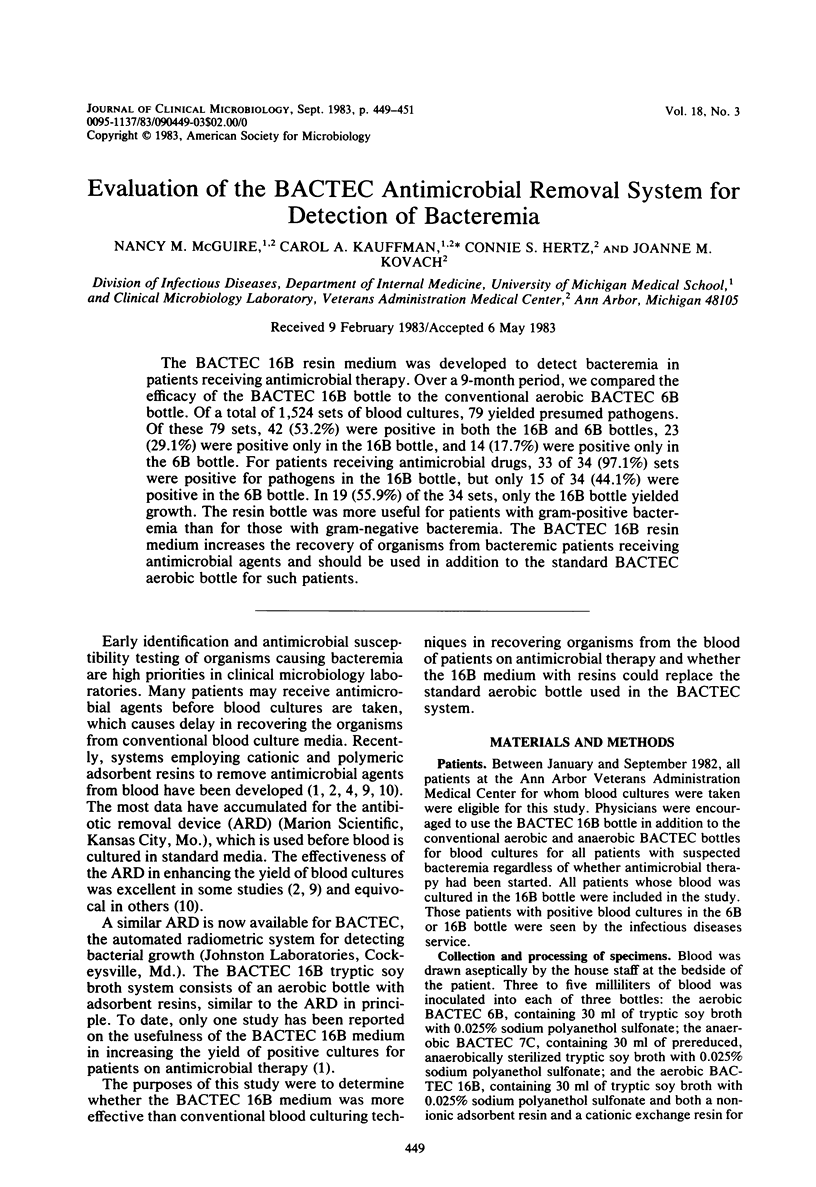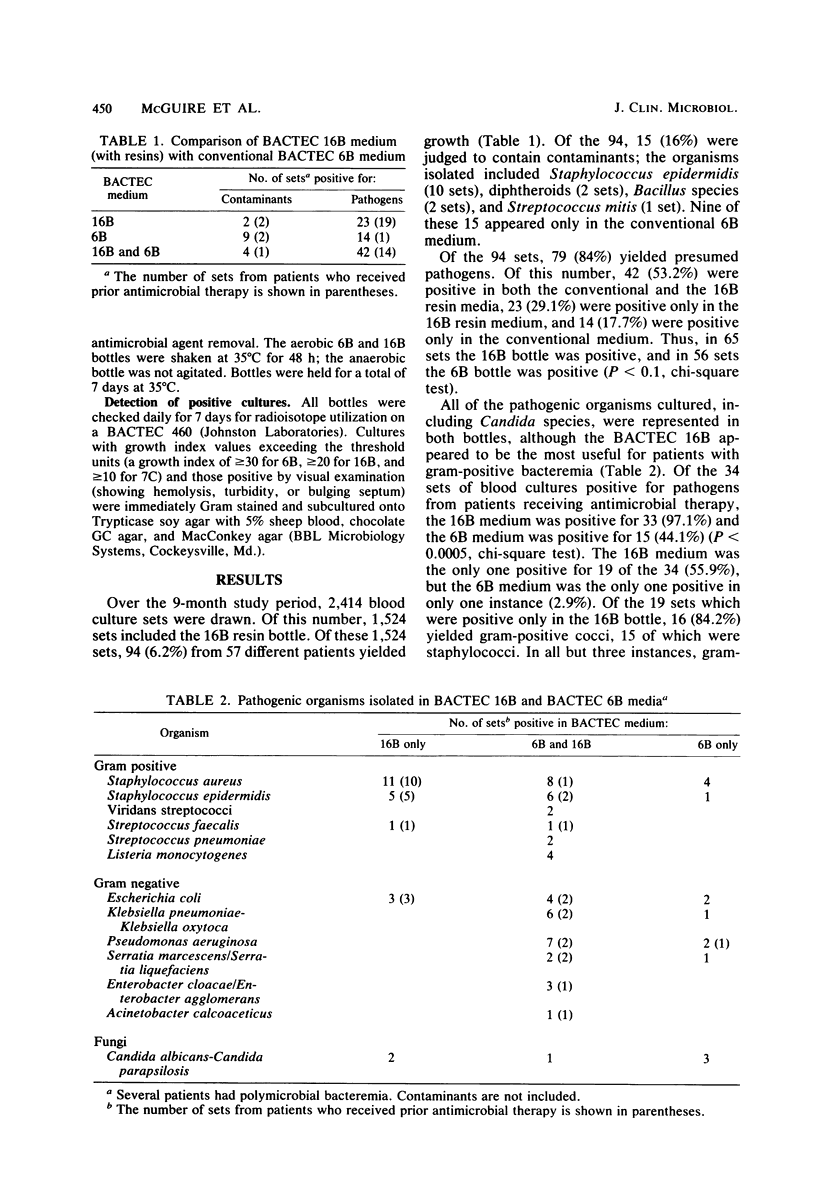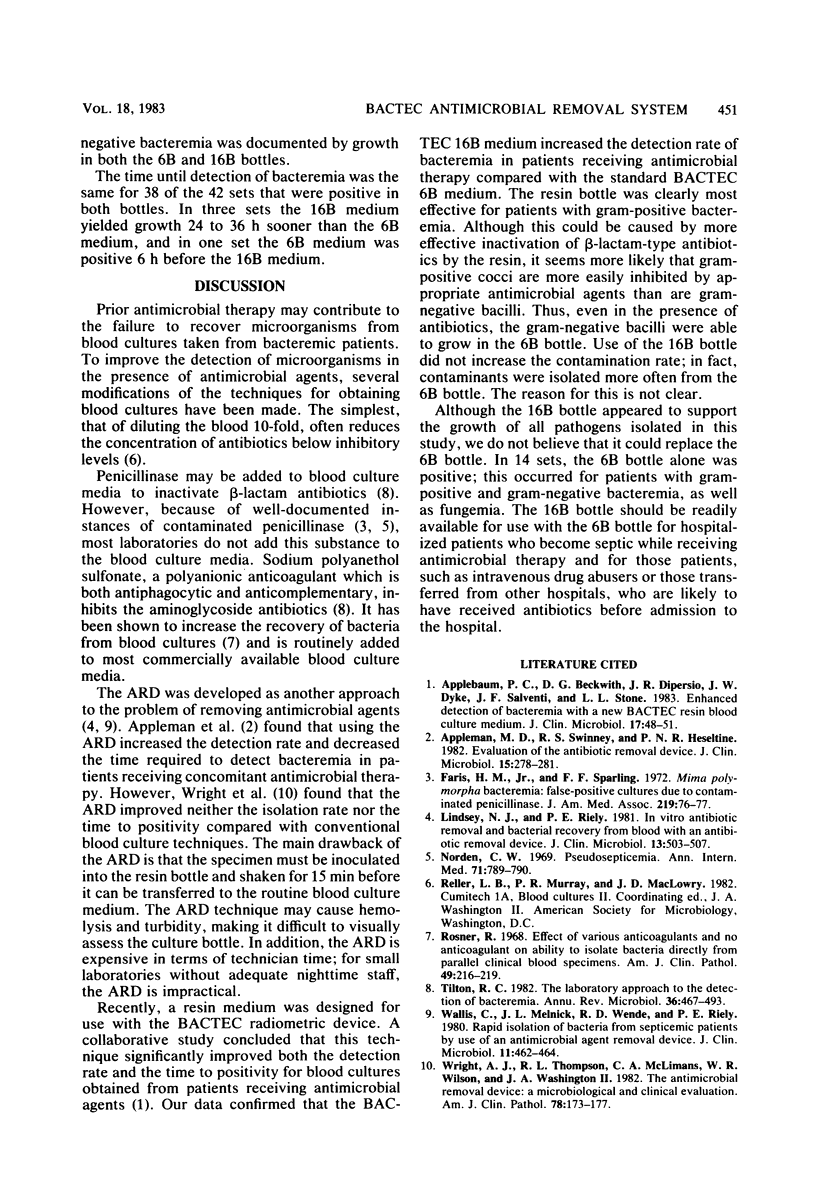Abstract
The BACTEC 16B resin medium was developed to detect bacteremia in patients receiving antimicrobial therapy. Over a 9-month period, we compared the efficacy of the BACTEC 16B bottle to the conventional aerobic BACTEC 6B bottle. Of a total of 1,524 sets of blood cultures, 79 yielded presumed pathogens. Of these 79 sets, 42 (53.2%) were positive in both the 16B and 6B bottles, 23 (29.1%) were positive only in the 16B bottle, and 14 (17.7%) were positive only in the 6B bottle. For patients receiving antimicrobial drugs, 33 of 34 (97.1%) sets were positive for pathogens in the 16B bottle, but only 15 of 34 (44.1%) were positive in the 6B bottle. In 19 (55.9%) of the 34 sets, only the 16B bottle yielded growth. The resin bottle was more useful for patients with gram-positive bacteremia than for those with gram-negative bacteremia. The BACTEC 16B resin medium increases the recovery of organisms from bacteremic patients receiving antimicrobial agents and should be used in addition to the standard BACTEC aerobic bottle for such patients.
Full text
PDF


Selected References
These references are in PubMed. This may not be the complete list of references from this article.
- Appelbaum P. C., Beckwith D. G., Dipersio J. R., Dyke J. W., Salventi J. F., Stone L. L. Enhanced detection of bacteremia with a new BACTEC resin blood culture medium. J Clin Microbiol. 1983 Jan;17(1):48–51. doi: 10.1128/jcm.17.1.48-51.1983. [DOI] [PMC free article] [PubMed] [Google Scholar]
- Appleman M. D., Swinney R. S., Heseltine P. N. Evaluation of the Antibiotic Removal Device. J Clin Microbiol. 1982 Feb;15(2):278–281. doi: 10.1128/jcm.15.2.278-281.1982. [DOI] [PMC free article] [PubMed] [Google Scholar]
- Faris H. M., Jr, Sparling F. F. Mima polymorpha bacteremia. False-positive cultures due to contaminated penicillinase. JAMA. 1972 Jan;219(1):76–77. doi: 10.1001/jama.219.1.76. [DOI] [PubMed] [Google Scholar]
- Lindsey N. J., Riely P. E. In vitro antibiotic removal and bacterial recovery from blood with an antibiotic removal device. J Clin Microbiol. 1981 Mar;13(3):503–507. doi: 10.1128/jcm.13.3.503-507.1981. [DOI] [PMC free article] [PubMed] [Google Scholar]
- Norden C. W. Pseudosepticemia. Ann Intern Med. 1969 Oct;71(4):789–790. doi: 10.7326/0003-4819-71-4-789. [DOI] [PubMed] [Google Scholar]
- Rosner R. Effect of various anticoagulants and no anticoagulant on ability to isolate bacteria directly from parallel clinical blood specimens. Am J Clin Pathol. 1968 Feb;49(2):216–219. doi: 10.1093/ajcp/49.2.216. [DOI] [PubMed] [Google Scholar]
- Tilton R. C. The laboratory approach to the detection of bacteremia. Annu Rev Microbiol. 1982;36:467–493. doi: 10.1146/annurev.mi.36.100182.002343. [DOI] [PubMed] [Google Scholar]
- Wallis C., Melnick J. L., Wende R. D., Riely P. E. Rapid isolation of bacteria from septicemic patients by use of an antimicrobial agent removal device. J Clin Microbiol. 1980 May;11(5):462–464. doi: 10.1128/jcm.11.5.462-464.1980. [DOI] [PMC free article] [PubMed] [Google Scholar]
- Wright A. J., Thompson R. L., McLimans C. A., Wilson W. R., Washington J. A., 2nd The antimicrobial removal device. A microbiological and clinical evaluation. Am J Clin Pathol. 1982 Aug;78(2):173–177. doi: 10.1093/ajcp/78.2.173. [DOI] [PubMed] [Google Scholar]


